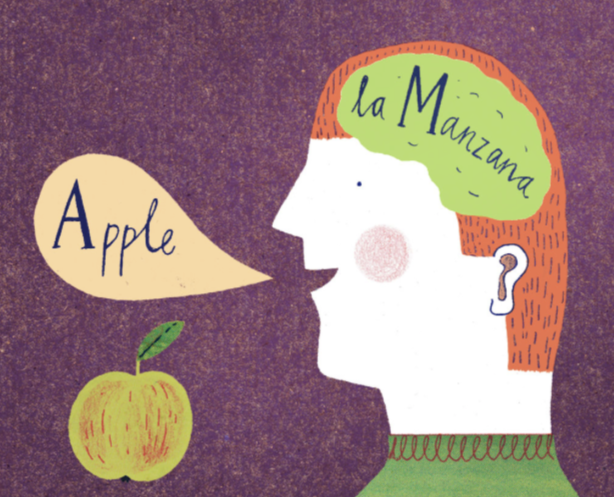A few days ago, as I was sitting in a room of aspiring administrators going through introductions, I couldn’t help but feel grateful for the gift of bilingualism. What prompted our conversations around language was a simple request from our Professor: “introduce yourself by sharing a story.” She further challenged us with a prompt to guide our stories: “Name a moment in your K-12 student life when you felt inspired and challenged to ‘do more, learn more, know more’ in the subject at hand.”
I was eager to share my memory about my 4th grade teacher, Mrs. Beaver, who’d introduced me to the internet and the concept of “research” and made me fall in love with wanting to always know more. Ironically, however, I was the lone wolf when it came to sharing about technology as I quickly realized that in a cohort of twenty, eighteen of my colleagues shared stories about teachers who believed in them despite their own academic struggles, most of which stemmed from language barriers.
For the last three years, I have worked at a Spanish Dual Immersion School in Pico Rivera. At the beginning, I wasn’t sure about how students benefited from the 90/10 model — they start off with learning in 90% of the target language which in this case was Spanish, and 10% in English. Every year they add 10% more English, until they are learning in a 50/50 setting. It took very little time though to drink the Kool-Aid and buy into the program. The truth is, bilingualism is beautiful. I saw more students flourish in the classroom by using their foundational knowledge as well as witnessed more parents feel empowered to help with homework, since it was in a language they felt comfortable in. I grew up in a Spanish speaking household, and while I grew up classified as an EL (English learner), I can’t help but feel grateful to have been given the privilege of a bilingual education. Not only have I been provided endless opportunities because of the gift of being biliterate and bilingual, but I have also been granted the opportunity to build strong connections and relationships with the parents of my students as I am able to communicate with them in a way that feels like “home” to them.
In honor of the Global 2030 initiative, an initiative led by State Superintendent Tom Torlakson to “expand the teaching and learning of world languages and the number of students proficient in more than one language over the next 12 years,” I urge parents to embrace speaking two languages at home. You’ve given your children the gift of a first language, and that should be recognized now more than ever, as it will place your child ahead of the playing field as we lead into 2030.
Alma Renteria
Latest posts by Alma Renteria (see all)
- Rincón Universitario: Cómo Escribir una Narrativa Auténtica para Solicitudes de Universidades, Parte 3 - October 17, 2019
- College Corner: How To Write An Authentic Narrative for College Applications, Part 3 - October 15, 2019
- Rincón Universitario: Cómo Escribir Una Narrativa Auténtica para Solicitudes Universitarias, Parte 2 - October 1, 2019
- College Corner: How To Write An Authentic Narrative for College Applications, Part 2 - September 26, 2019
- College Corner: Cómo Escribir un Relato Auténtico de Solicitudes para la Universidad, Parte 1 - September 4, 2019

